Catégories
|
Catégories principales > 07 - ENVIRONNEMENT > 7.4 - Ressources Naturelles : Paysage, Biodiversité, Patrimoine naturel
7.4 - Ressources Naturelles : Paysage, Biodiversité, Patrimoine naturel |
Documents disponibles dans cette catégorie (551)
 Ajouter le résultat dans votre panier Affiner la recherche
Ajouter le résultat dans votre panier Affiner la recherche
Article
F. Valenti ; M. Bustamante ; G. Mancuso ; A. Toscano ; J. Zhuang ; D. Zilberman ; W. Liao |This study applied a three-step approach, data collection and sorting, GIS-based analysis, and technical analysis to evaluate the food, water, and energy systems in Europe. It explores a FEW nexus solution based on maize, wheat, and rice product[...]
Article
M. Yaseen ; A. Pagano ; R. Giordano ; S. Vanino ; S. Fabiani ; V. Baratella ; V. Iacobellis ; A. Izzaddin ; I. Portoghese |The “Nexus” concept has emerged as an effective approach to natural resources management, that integrates management and governance across sectors and scales, emphasizing the need to consider interconnections and interdependencies among multiple[...]
Article
S. Alali ; V. Vaglia ; S. Bocchi ; A. Schievano ; M. Betti ; P. De Marinis |Agroforestry Systems are gaining attention as a sustainable alternative to conventional agriculture, yet there is a lack of practical methods to guide their design by integrating ex-ante participatory ecosystem services (ESs) assessment. This st[...]
Article
E. Sedighi ; H. Golzar ; B.D. Fath ; A. Kharrazi ; E. Rovenskaya |This study investigates the systemic interconnections among the Water, Energy, and Food (WEF) sectors within the Tigris and Euphrates River (TigER) basin, focusing on the historical trajectories and resource competition among its four main ripar[...]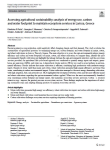
Article
Resource-intensive crop production could negatively affect changing climate and food demand. This study evaluates the sustainability of agricultural practices by examining energy use, carbon footprint, and water footprint in maize, cotton, and w[...]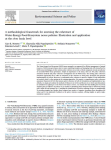
Article
The Water-Energy-Food-Ecosystem (WEFE) nexus emerged as an approach for efficient management of natural resources. WEFE nexus governance aims to ensure exploiting synergies and managing trade-offs arising from the WEFE nexus interlinkages. In th[...]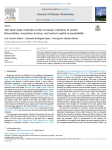
Article
This review analyzes the evolution of the economic valuation of environmental assets and services as a succession of paradigms, which we identify as (i) valuation of the environment, (ii) valuation of ecosystem services, and (iii) natural capita[...]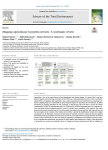
Article
Agriculture is one of the major drivers of land degradation and climate change. It is known that it can have positive impacts on provisioning ecosystem services (ES) (e.g., food production); however, it has as well detrimental effects on regulat[...]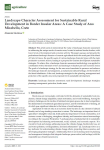
Article
This article seeks to demonstrate the value of landscape character assessment in addressing the unique needs of remote areas, located at national insular borders, with lower levels of development and economic activity. The paper assesses and pre[...]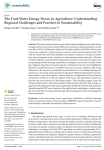
Article
This study explores global research trends, regional challenges, and methodological approaches in food-water-energy (FWE) nexus research within agricultural contexts from 2000 to 2024. A bibliometric analysis of 929 articles indexed in the Web o[...]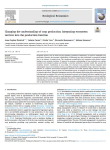
Article
A.S. Dietrich ; G. Vico ; R. Bommarco ; H. Hansson |Ecosystem services, such as weed and pest regulation provided by biodiversity, are vital for sustainable crop production. However, the economic contributions of biodiversity are often overlooked in commercial markets due to the absence of market[...]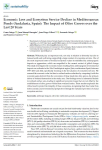
Article
G. Ortega ; J.M. Barragán ; J.D. Gilbert ; F. Ortega ; F. Guerrero |Wetlands play an important role, not only in relation to diversity but also to human health and well-being, supporting a large number of ecosystem services. One of the most important losses of wetland ecosystem values is established by anthropog[...]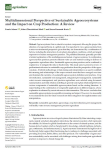
Article
Agroecosystems form a natural ecosystem component, allowing the proper classification of a regional biome at a global scale. It is important to view agroecosystems from a micro-environmental perspective given that they are characterised by a com[...]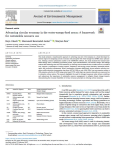
Article
This study presents a transformative approach to achieving near-zero CO2 emissions in a fossil fuel-based industrial region by integrating circular economy (CE) principles with water-energy-food (WEF) nexus optimization. Utilizing a linear optim[...]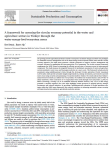
Article
The growing need for agricultural production and the consequences of climate change necessitate new paradigms for sustainable resource management such as the Water-Energy-Food-Ecosystem (WEFE) nexus and the circular economy approach. The WEFE ne[...]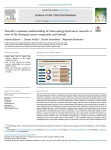
Article
The water-energy-food nexus is a relatively new field of research that has received much attention in research and policy. Applying a nexus lens can increase efficiency, reduce trade-offs, and build synergies that can help tackle future pressure[...]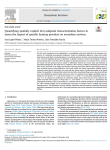
Article
The Life Cycle Assessment (LCA) methodology is a scientifically sound tool, endorsed by the European Commission, for conducting environmental assessments. Despite its standardized approach, certain areas require improvement, particularly concern[...]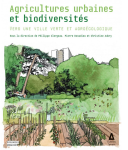
Ouvrage
P. Clergeau, dir. ; P. Donadieu, dir. ; C. Aubry, dir. | Rennes [France] : Apogée | Écologies Urbaines | 2025L’agriculture urbaine est en plein développement depuis quelques années, soutenues tant par les collectivités à des fins alimentaires (les jardins collectifs, par exemple) que par des entreprises agricoles (maraîchage ou potager de production en[...]
Thèse, Mémoire, Master
M. Abdallah | 2025The literature on common pool resources and common property has grown swiftly in the last two decades. Many publications have been pointed out in the field. The publication in 1965 of Manrur OIson's book” The Logic of Collective Action”, followe[...]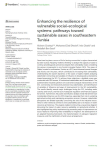
Article
H. Charieg ; M.Z. Dhraief ; I. Gharbi ; A. Ben Saad |Oases have long been a source of life for farming communities in regions characterized by water scarcity. Adopting "resilience thinking" to analyze the capacity of oases to continue providing goods and services despite their vulnerability means [...]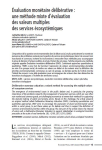
Article
L'imposition de la question environnementale dans le débat social, et plus précisément la montée en puissance des problèmes soulevés par la gestion de services écosystémiques, biens très souvent non marchands et communs, invitent les économistes[...]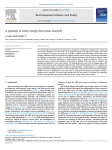
Article
The water-energy-food (WEF) nexus was introduced as an approach to address the combined water, energy, and food security challenges of the late 2000s. As an integrated approach, the WEF nexus combines these three resources together to measure an[...]
Article
This study explores how agrobiodiversity at both local and regional scales impacts farmland value across five Mediterranean countries in the EU. Previous literature has primarily addressed on-farm biodiversity and its effects on productivity and[...]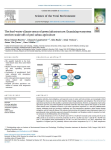
Article
Emission reduction, heat mitigation, and improved access to water and food provision are increasingly critical challenges for urban areas in the context of global climate change adaptation and mitigation. The revival of local agricultural produc[...]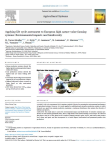
Article
M. Torres-Miralles ; V. Kyttä ; P. Jeanneret ; M. Lamminen ; P. Manzano ; H.L. Tuomisto ; I. Herzon |CONTEXT Life Cycle Assessment (LCA) remains a method of choice for assessing the environmental performance of agricultural systems. However, it is rarely applied to multifunctional extensive production systems, in which livestock use, apart from[...]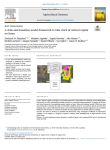
Article
F.W. Rainsford ; M. Appleby ; A. Hawdon ; A. Maisey ; R. Lawrence ; I. Semmler ; D. O'Brien ; S. Ogilvy ; J.Q. Radford |Context Natural capital accounting is an emerging approach to help address the challenge of preventing further biodiversity loss while sustainably providing resources for a growing human population. It requires an effective and robust framework [...]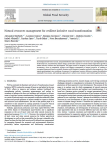
Article
A. Meybeck ; L. Cintori ; R. Cavatassi ; V. Gitz ; A. Gordes ; I. Albinelli ; C. Opio ; T. Bahri ; N. Berrahmouni ; Y. Li ; M. Boscolo |Increasing land and water scarcity, unequal distribution and competition over resource use, land degradation and biodiversity loss, exacerbated by climate change, question the capacity of current models of agriculture growth to sustain inclusive[...]
Article
Dans un moment de l’histoire où la carte du monde se lit fortement selon le clivage entre régimes autoritaires et démocraties, tandis que les questions environnementales montent en puissance, la réflexion sur le rapport entre régimes politiques [...]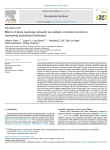
Article
Linear landscape elements, such as field margins, are agricultural practices whose adoption is supported by agri-environmental climate measures (AECMs). AECMs are meant to improve ecological conditions on farms and surrounding areas. The effecti[...]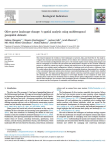
Article
S. Chiappini ; E. Marcheggiani ; A. Galli ; A. Khosravi ; M.D.A.M. Choudhury ; M. Balestra ; D. Neri |This research examines the evolution of olive landscapes in Cartoceto, Italy, post-World War II. This study investigates the structural and functional attributes of two distinct olive cultivation models, mixed olive groves with a low tree densit[...]








